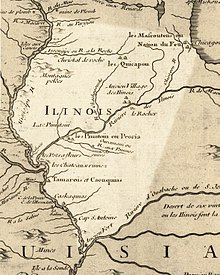 On Dec. 3, 1818 Illinois entered the union as our 21st State. At the time, the estimated population of total European settlers and Native Americans was around 35,000. The treeless prairie was very different from the adjacent forests of Kentucky and Tennessee, and was still largely unsettled. Most of the early Illinois settlers remained in the southern part of the state, where they built homes and farms near the trees that grew along creek and river bottoms. The southern part of the state, known as “Little Egypt,” was mainly settled by migrants from the South, who had traveled there via the Ohio River. Eventually, a few farmers took on the task of plowing the prairie and discovered that the soil was richer than expected. The development of heavier prairie plows and improved access to wood and other supplies, accessible through new shipping routes, encouraged more farmers to head north.
On Dec. 3, 1818 Illinois entered the union as our 21st State. At the time, the estimated population of total European settlers and Native Americans was around 35,000. The treeless prairie was very different from the adjacent forests of Kentucky and Tennessee, and was still largely unsettled. Most of the early Illinois settlers remained in the southern part of the state, where they built homes and farms near the trees that grew along creek and river bottoms. The southern part of the state, known as “Little Egypt,” was mainly settled by migrants from the South, who had traveled there via the Ohio River. Eventually, a few farmers took on the task of plowing the prairie and discovered that the soil was richer than expected. The development of heavier prairie plows and improved access to wood and other supplies, accessible through new shipping routes, encouraged more farmers to head north.
In 1819, Vandalia became the new state’s first capital, and over the next 18 years, three separate buildings were built to serve successively as the capitol building. In 1837, the state legislators representing Sangamon County, under the leadership of state representative Abraham Lincoln, succeeded in having the capital moved to Springfield, where a fifth capitol building was constructed. A sixth capitol building was erected in 1867, which continues to serve as the Illinois capitol today.
The state experienced rapid population growth almost immediately. The 1820 census counted 55,211 Illinois residents, a gain of 16.2% from 1810. Since then, Illinois has gained population in every decennial census, although the rate of growth has slowed. As of 2020, the state is approaching 13 million residents. Since 1840, the center of population in Illinois had shifted to the north. Chicago, once a remote hamlet, rapidly emerged as a bustling city. Today, Illinois is one of the most dynamic and diverse states in the nation and it all began in Dec. 1818.



